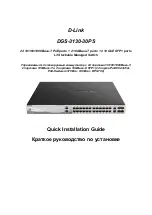
13
FX/TX LinkLoss and FiberAlert
During normal operation, link integrity pulses are transmitted by all point-to-point
Ethernet devices. When an iMcV-Giga-FiberLinX-II receives valid link pulses, it
knows that the device to which it is connected is up, and that the copper or fiber
cable coming from that device is intact. The appropriate LNK (link) LED is lit to
indicate this. For troubleshooting information utilizing the LinkLoss and FiberAlert
features of the iMcV-Giga-FiberLinX-II modules, refer to
Troubleshooting
at the end of
this manual.
** WARNING **
FiberAlert and LinkLoss features cause data interruptions designed to alert remote sites of line
failures. These data interruptions can be misinterpreted as module failures when these features
are enabled. Enable these features only when the resulting data interruptions and causes are
well understood.
FX LinkLoss
FX LinkLoss is a link integrity monitoring feature that forwards fiber link faults to the
RJ-45 Data port to indicate that a fiber link fault has occurred.
TX LinkLoss
TX LinkLoss is a link integrity monitoring feature that forwards an RJ-45 link fault to
the fiber connected device to indicate that a link fault has occurred.
FiberAlert
FiberAlert minimizes the problems associated with the loss of one strand of fiber.
Normally when a single strand of fiber is lost, the transmitting side of the connection
is unaware that there is a fault. FiberAlert returns faults back on the fiber they came
in on.
Using LinkLoss and FiberAlert
In a typical central site to remote site media conversion, it is recommended that the
enable the LinkLoss and FiberAlert features are enabled as indicated in the following:
FiberAlert and LinkLoss
Feature
Enabled
Fault Location
Port affected
FiberAlert
Remote Side Only
Fiber
Fiber
TX LinkLoss
Remote Side (or both)
Twisted Pair
Fiber
FX LinkLoss
Host Side (or both)
Fiber
Twisted Pair
** WARNING **
Do not enable FiberAlert on both modules when using iMcV-Giga-FiberLinX-II in pairs. This
















































